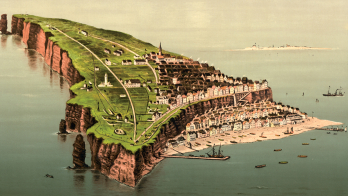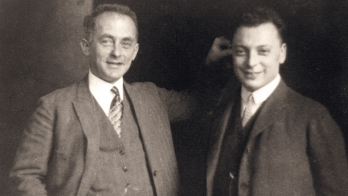by Anil Ananthaswamy, Houghton Mifflin Harcourt. Hardback ISBN 9780547394527, $25. Paperback ISBN 9780547394527 $15.95.

In his recent book The Edge of Physics, Anil Ananthaswamy, a science writer for New Scientist, covers the most extreme physics and astronomy experiments that are set to uncover the secrets of neutrinos, dark matter and dark energy, galaxy formation, supersymmetry and extra dimensions. The author takes us on an extraordinary journey over five continents to tour the best telescopes and particle detectors, from the summits of the Andes to deep down in the Soudan mine, stopping by the South Pole and paying a visit to CERN. Following him on this trip is already exciting, but reading his account of discussions with physicists, astronomers and engineers along the way is simply fascinating. He tells us about each experiment as he discovered them through discussions with the scientists involved. For example, he writes about the ATLAS experiment through the eyes of Peter Jenni, Fabiola Gianotti and François Butin, with added insight from a meeting with Peter Higgs.
This makes for lively reading about all of these experiments. He not only tells us the most striking details about how each one was built, but he also includes accurate information about the science and technology behind them, avoiding clichés in his efforts to make it understandable to all. You read about his stay at Lake Baikal, discussing neutrino physics with enthusiastic and dedicated physicists such as Igor Belolaptikov and Ralf Wischnewski, sharing stories and vodka with them on the shores of Lake Baikal in the midst of winter – the only time that the photomultiplier tubes of the underwater neutrino experiment can be serviced from the frozen surface of the lake. The reader learns about the scientific research at all of these places through personal accounts from the scientists involved. At times, it felt as if I was meeting old friends at a conference and hearing their best stories about their experiments, sharing their enthusiasm and discovering unknown details about their research.
The Edge of Physics also allowed me to learn more about the best astronomy instruments, some located in idyllic places such as Hawaii, while others are under construction in the least life-sustaining places, such as in the Karoo desert in South Africa or the Hanle Valley in India. Ananthaswamy’s book is as much a tribute to the science as it is to the dedicated scientists pushing the limits of knowledge. His clear explanations and entertaining style will appeal to scientists and non-scientists alike. A book not to be missed.








